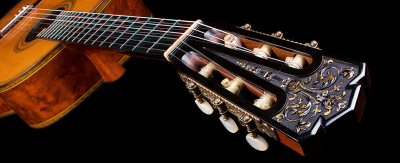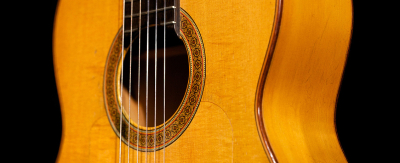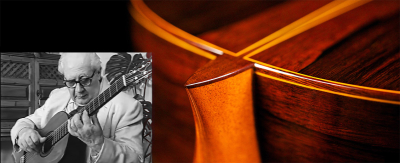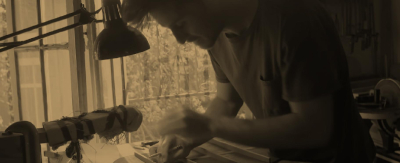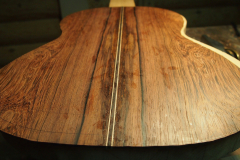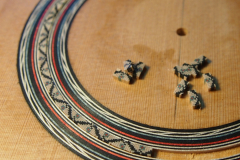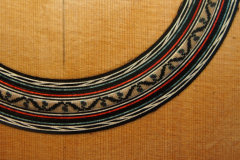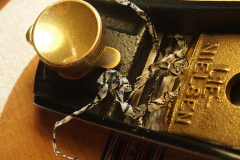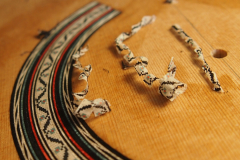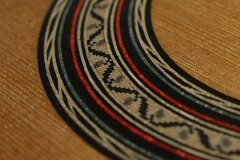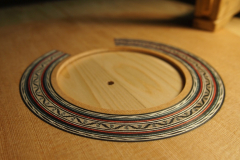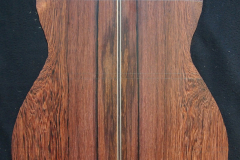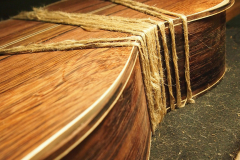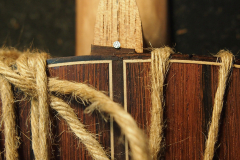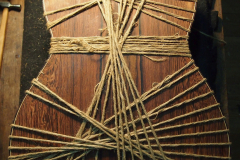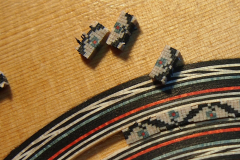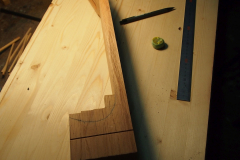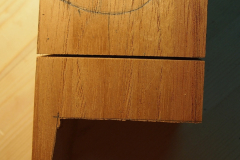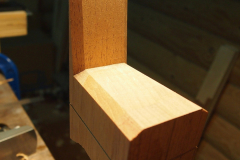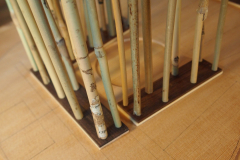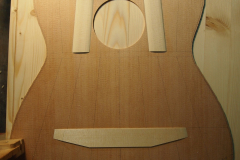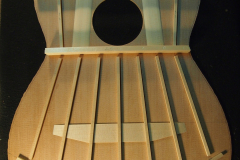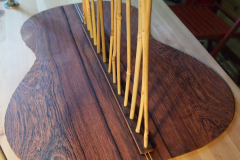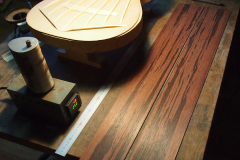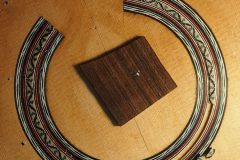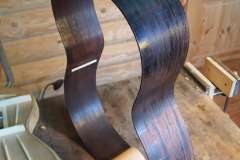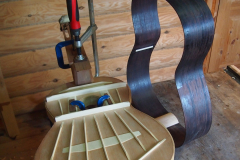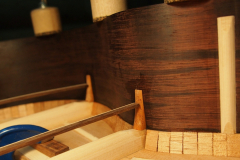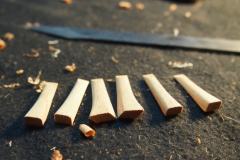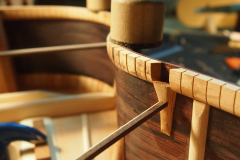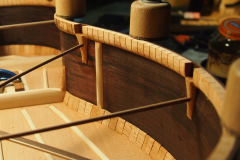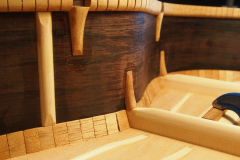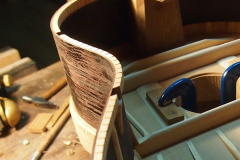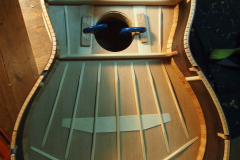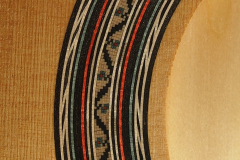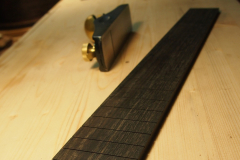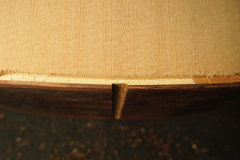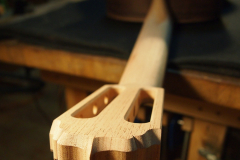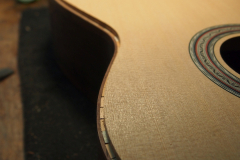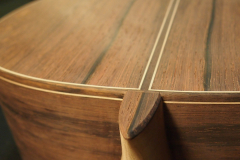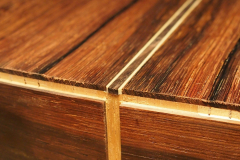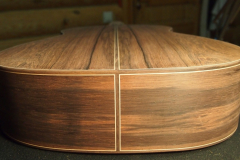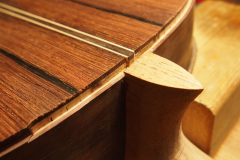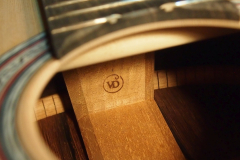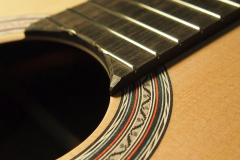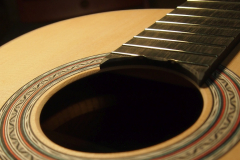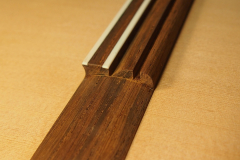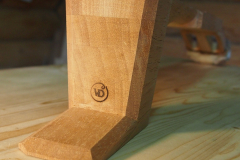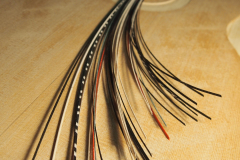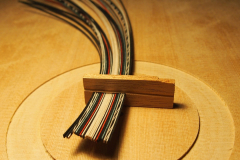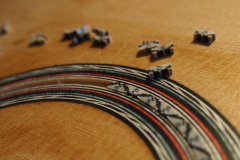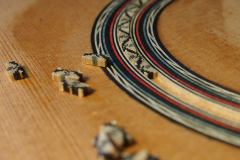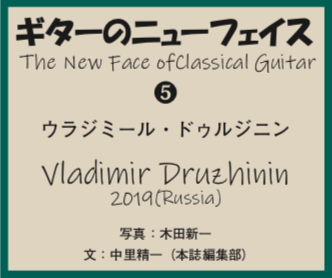See Photos of Vladimir Druzhinin's Next Guitar and Read His Recent Interview in Gendai Guitar Magazine
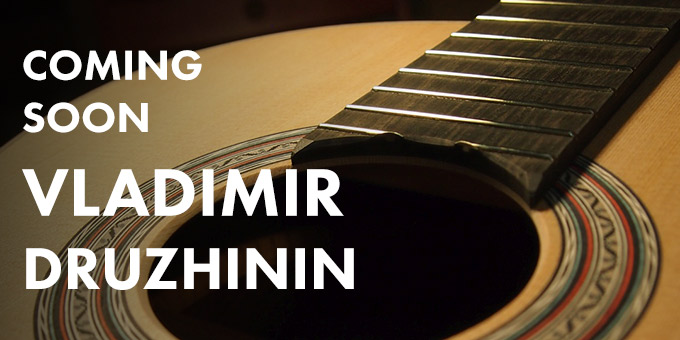
Just in are some great shots of Vladimir Druzhinin’s next guitar for us, as well as a recent interview he did in Japan that was published in Gendai Guitar Magazine.
We’ve known Vladimir Druzhinin for many years and received our first guitar from him in 2016. Always driven to build a better guitar, his methods are constantly being refined, both aesthetic and structural. You’ll see in the photos that he’s made a few slight aesthetic changes to his rosette design and the inclusion of a “VD” stamp on the neck block. Of course the main thrust of his work continues to be dedicated to building a guitar with magnificent sound and ease of play.
This next Vladimir Druzhinin guitar should arrive to the showroom very soon as it’s nearly finished. For now, feel free to look through the gallery below to catch a glimpse of what’s about to come our way.
The article and interview below were written and conducted by Seiichi Nakazato of the Editorial Department for Gendai Guitar magazine in 2019. Originally in Japanese, the transcription is translated into English here for your enjoyment.
“The New Face of the Classical Guitar” – Vladimir Druzhinin
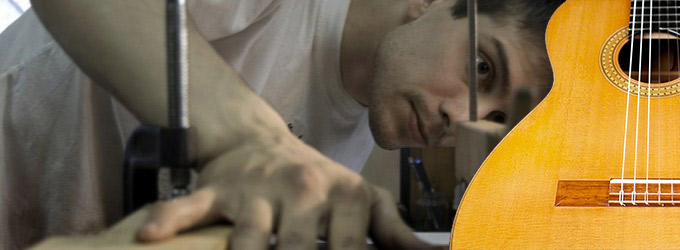
Vladimir Druzhinin was born in 1983 in Novosibirsk, Russia. His father is a physicist, and his mother is a musician. In 2000, he graduated from a high school specializing in physics and mathematics and following that he enrolled in Novosibirsk State University. Vladimir graduated with a Bachelor’s degree in Physics in 2004 and a Master’s degree in Accelerator Physics in 2006. From 2000 to 2008, he worked as an intern at the Budker Institute of Nuclear Physics. Since 2004 (in addition to the Master’s program at the university), he has been studying double bass performance at the strings club of Novosibirsk College of Music.
In 2007, Vladimir Druzhinin participated as a local big band bassist and began performing more often. When he visited Moscow in 2010, he happened to meet guitar maker Timofey Tkach and was impressed to see his instruments were based on the Spanish tradition of luthiery, so he decided to become Tkach’s apprentice in the craft. Since then, Druzhinin has produced various classical guitar models and lutes and has also restored various guitars and other instruments.
[GSI Note: In 2016, Vladimir built his first guitar for GSI and continues to send his finest instruments to the Santa Monica showroom every year. You can view his previous guitars in the Museum Archive to compare his latest design updates with his past designs.]
In May 2019, Vladimir visited Japan to personally deliver his latest creation at the time to Hyundai Guitars.
[While in Japan, editor of Gendai Guitar magazine Seiichi Nakazato sat down with the Russian luthier and delved into his influences as a guitar maker, ultimately dubbing him “The New Face of the Classical Guitar” in Russia perhaps for his scientific approach to guitar making in a field traditionally rooted in more of an artistic/craftsmen philosophy.]
— Seiichi Nakazato (SN): You seem to have participated in the [José Luis] Romanillos guitar production workshop, is that correct?
—Vladimir Druzhinin (VD): Actually no, I didn’t really participate, but I paid a courtesy visit to his home about seven years ago. I learned a lot from reading his book Antonio de Torres, and that book is a valuable source of information for those who take the time to understand it. I also had discussions with Romanillos about many guitar-related topics. I think that guitars are sound resonators, and it’s important to start with that concept of resonance as the foundation… He also showed me a guitar he made for himself, which is definitely unsold – it’s his last work.
…
— SN: What is your favorite design?
— VD: I first started making Hermann Hauser models, then moved on to Manuel Ramirez and his apprentice Santos Hernández, but I have many other favorite designs as well.
— SN: Do you use acoustic measurement equipment?
— VD: I do run waveform analysis software, which is built into my computer. I record the natural sound and tuning of a soundboard before applying the timber [(bracing)] and use that data later for reference.
I’m lucky Russia is so vast that I can source and have access to many species of spruce to use as tonewood for soundboards on my guitars. This recent guitar that I brought to Japan uses a particular piece of spruce known as Caucasus spruce, [which is native to the Caucasus mountains and areas near northeast Turkey…] I bought 30 sets of that spruce, and I have about 10 sets of straight-grained sheets. Otherwise, I mainly purchase much of my tonewood materials in Spain.
— SN: Do you use any Japanese tools while you’re constructing a guitar?
— VD: Yes, my chisel and knife are made in Japan! I will go to a grindstone store today [to get something to keep my tools sharp!].
— SN: Natural whetstones are expensive. They could make a big dent in your wallet [so watch out]!
Stay tuned for our next guitar by Vladimir Druzhinin. It’s nice to see he is gaining much-deserved recognition across the globe as we also become bigger fans of his work with each new guitar he sends over.
0 comment

